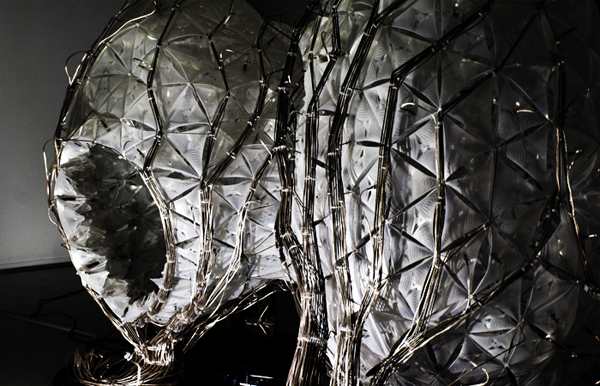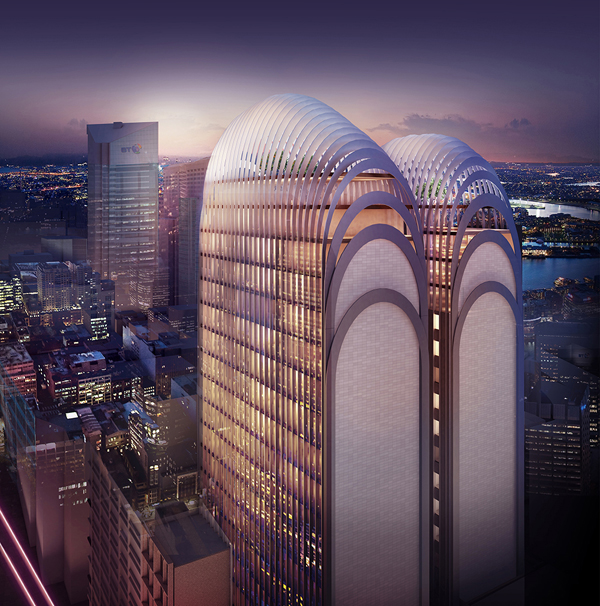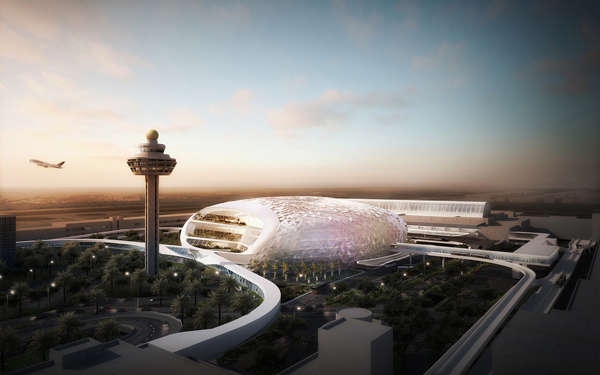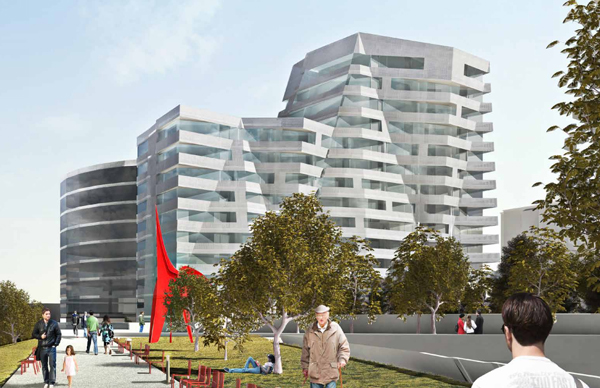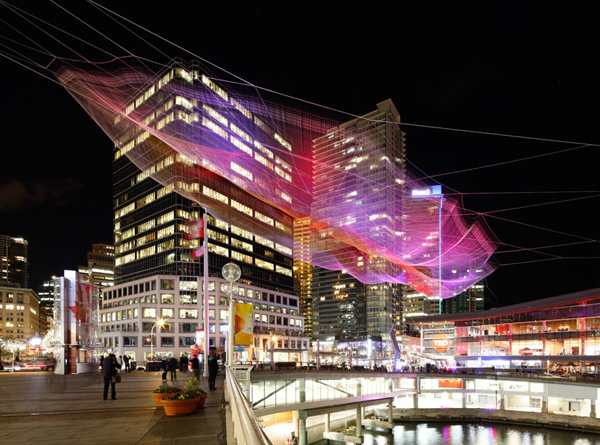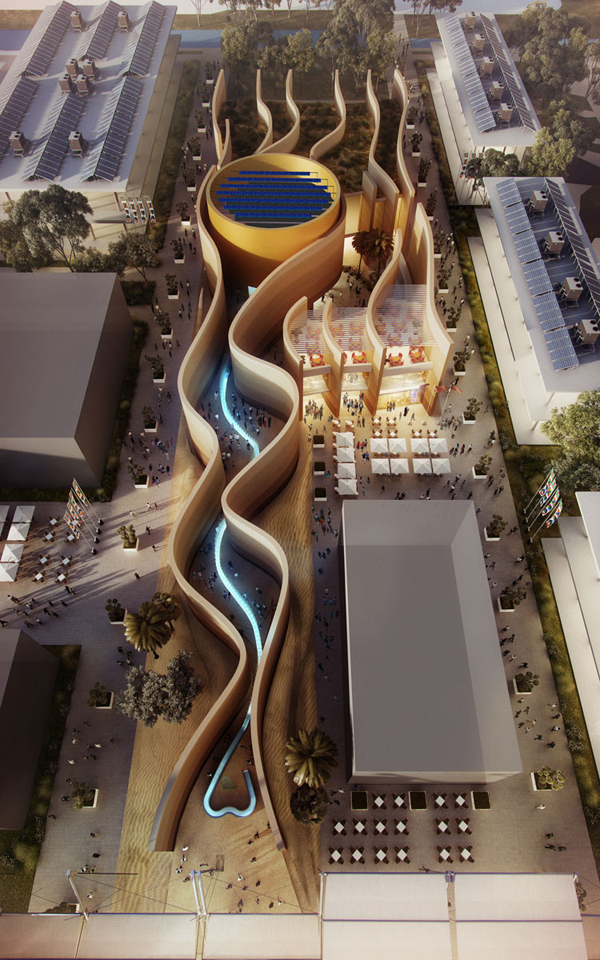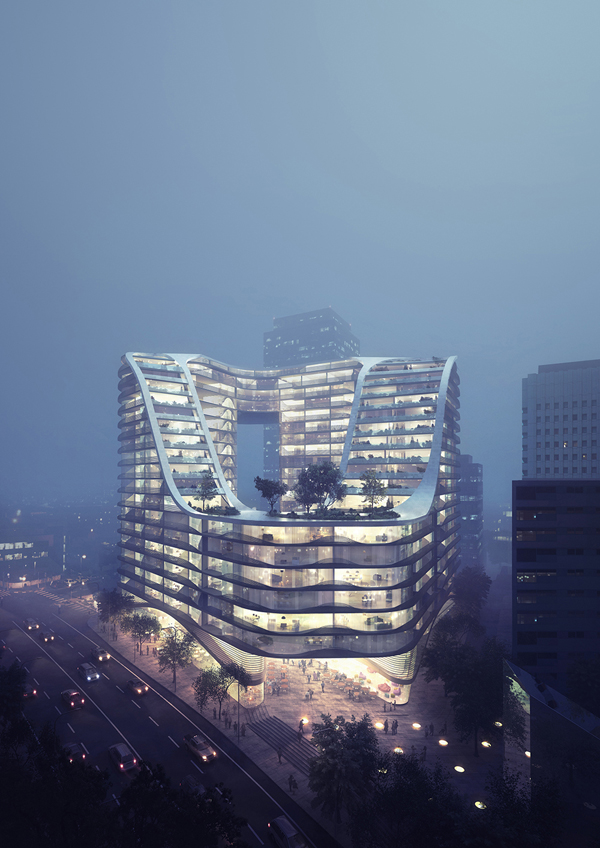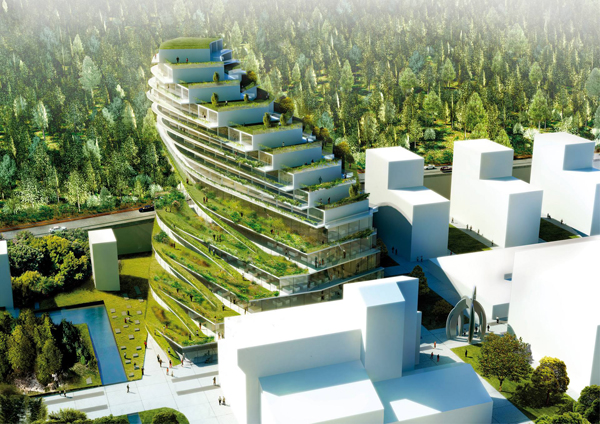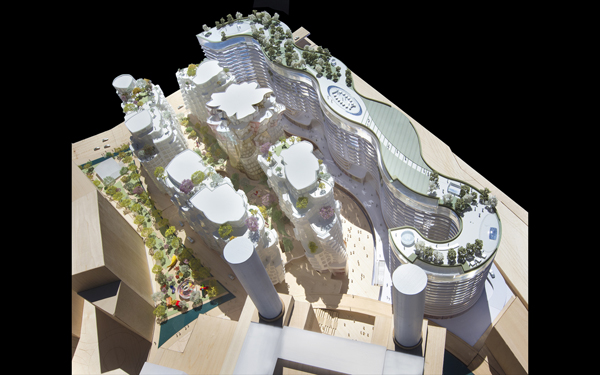“Meta-Follies for the Metropolitan Landscape” by ecoLogicStudio is a spatial mechanism which aims at establishing a playful dialogue with the user enabling the development of clouds of knowledge, a form of meta-language based on material experience, patterns recognition, sedimentation of feelings as well as a real-time meta-conversation.
This smart and responsive installation, a fibrous structure, has been conceived algorithmically and will keep evolving algorithmically once it will be handled over to its end users and it will commence its exhibition tour following unknown itineraries across different regions, cultures, languages and environmental contexts; it cannot be predicted how would these contexts read and respond to the project nor the pavilion can be designed to respond to a specific context in a traditional sense. However the machine nature of this proposal allows a dynamic form of contextual relationship with the surrounding urban environment, one that works through intuitive aesthetic appreciation as well as behavioral response.
Referring to Slavoj Zizek’s call for the development of a “new terrifying form of abstract materialism” the pavilion confronts the artificiality of the contemporary urban landscape with the production of a new form of hyper-artificiality able to offer refuge and consolation to the crowd of post-ecologists. Such emerging group of urban dwellers have stopped searching for a new Arcadia and are determined to develop a new ‘shanty’ version of it. Within this paradigm aesthetic codes are redefined – the beauty of nature, the proportion of the classic and the idealization of the early ecologists are substituted by the abstraction of digital meta-fields, of mathematical minimal paths, which define an algorithmic manual for the assemblage of new material systems made of processed industrial waste, post-consumer recycled plastic, bundles of electrical wires, solar photo-voltaic cells and cheap reused Chinese sound kits.
Such an improbable assemblage of ‘urban trash’ is pushed to the limit and engineered to reveal a new aesthetic, spatial and behavioral milieu, a new urban eco-language.
Regarding fabrication and material technologies, the process used for the pavilion is “slow prototyping” – few specific components of the project are custom-prototyped while on the others will be re-used, re-cycled and hacked existing trash technologies, to become integral part of our new prototype. In ecoLogicStudio they believe that there is no need for fast architecture, like there is no need of fast food, but there is a new need for a slow architecture, able to simultaneously embody the object, the process and the interface. They advocate architecture that operates like a swarm, or in the swarm – able to convert a multitude of simple instructions into an emergent meta-language of forms, movements and effects. Read the rest of this entry »

